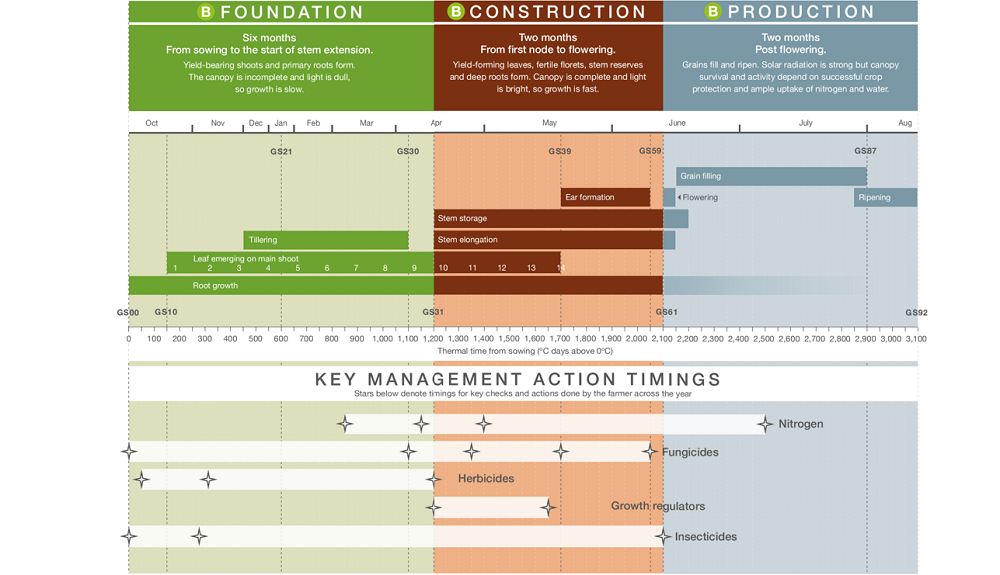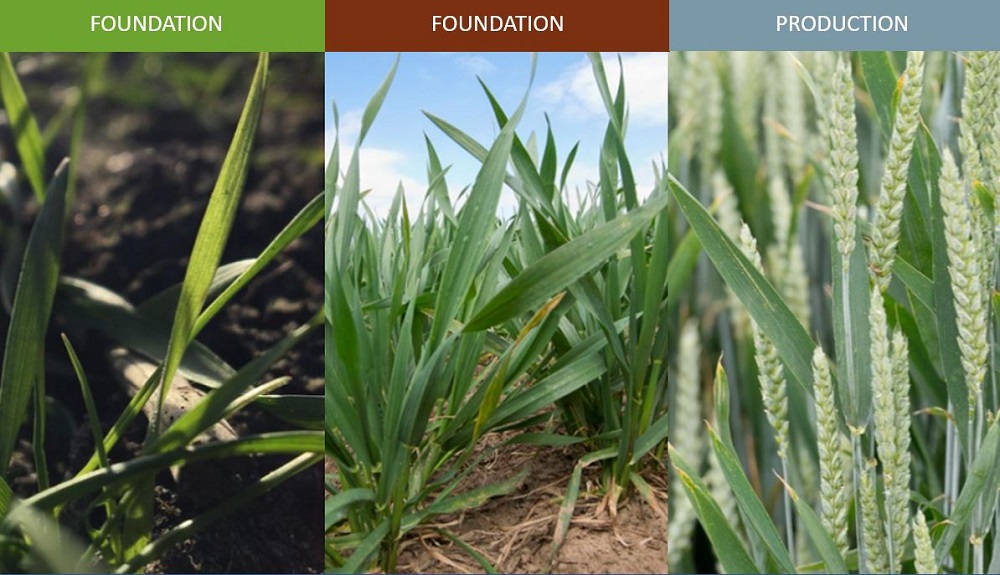- Home
- Knowledge library
- Key development phases and growth stages in wheat
Key development phases and growth stages in wheat
As wheat progresses through its life cycle, the crop changes in form (development) and accumulates dry matter (growth). Discover how these changes can be described by key cereal growth stages and developmental phases.
Cereal growth and development (key facts)
Development
- Governed by temperature and day length
- It can’t be managed easily during the season
- Varietal influence: High
- Other influences: Sowing date
Growth
- Can be managed using interventions through the season
- Varietal influence: Medium
- Other influences: Nutrition, crop protection products, growth regulators
Cereal growth stages
A plant’s life cycle can be described by ten developmental phases. Understanding these principal growth stages (GS) can help assist with management decisions.
Key growth stages in wheat
- Crop emergence (GS10)
- Start of stem extension (GS31)
- Flowering (GS61)
- End of grain filling (GS87)
The foundation, construction and production phases
The wheat life cycle is broken down into three key development phases.
Foundation phase
- Six months – from sowing to the start of stem extension
- Yield-bearing shoots and primary roots form
- The canopy is incomplete and light is dull, so growth is slow
Construction phase
- Two months – from first node to flowering
- Yield-forming leaves, fertile florets, stem reserves and deep roots form
- Canopy is complete and light is bright, so growth is fast
Production phase
- Two months – post flowering
- Grains fill and ripen
- Solar radiation is strong but canopy survival and activity depend on successful crop protection and ample uptake of nitrogen and water
The duration of each phase is governed by:
- Temperature: More growth occurs in any phase during cool temperatures, as phase duration is prolonged
- Vernalisation: A period of cool temperatures (0–12ºC) advances floral development and reduces the duration of the foundation phase. The majority of winter wheat varieties respond strongly to vernalisation, and spring wheats may have a slight response
- Day length: Long days advance floral development in most varieties. Day length affects the duration of both foundation and construction phases. Almost all commercial UK wheat varieties respond to day length
Stress-sensitive stages
The apex is frost-tolerant until reproductive development starts. Susceptibility to frost damage is highest when the ear is developing. Frost risk falls significantly from April. Overall risk of damage is lowest in late May and early June. From July onwards, drought risk increases.
Implications for management
Varieties vary in their response to vernalisation and day length. The relative speed of development of varieties to reach GS31 from early, medium and late sowings is published in the AHDB Recommended Lists. Conservative times for the latest safe sowing date to allow sufficient vernalisation to trigger flowering are also published.
Prolonging any development phase increases dry matter formation during that phase.
- Prolong development by sowing slow-developing varieties early
- Management after sowing influences growth, not development
- For highest yields, feed and protect leaves that emerge during stem extension in preference to earlier, lower leaves
- T1 sprays should be timed to protect final leaf 3. Spraying early will be ineffective, as the leaf will be within the leaf sheath

Note: Management action timings are indicative of what may be applied to a typical wheat crop and are not intended as recommendations. Advisers who are BASIS-qualified (for crop protection products) or FACTS-qualified (for fertiliser) should be consulted for specific rate and timing recommendations.


